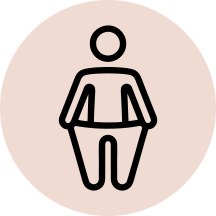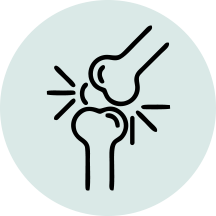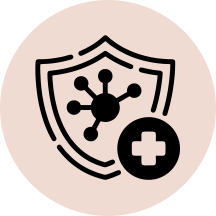Ladies, let's talk about an all-too-familiar problem: menstrual acne. We've all experienced the frustration of a breakout right before our period or during that time of the month. In this blog post, we'll delve into the causes of menstrual acne, explore different treatment options, and learn how to prevent those pesky pimples from ruining our monthly flow. Get ready for some enlightening information on this common skincare concern!
Introduction to menstrual acne
Although acne is most commonly associated with puberty, many people continue to suffer from breakouts well into adulthood. For women, this can be a particular problem during menstruation, when hormonal changes can trigger an increase in sebum production and lead to clogged pores and blemishes.
Menstrual acne is a common but often misunderstood condition. In this article, we'll take a look at the causes of menstrual acne, as well as some effective treatments and prevention methods.
So what exactly is menstrual acne? Put simply, it's acne that occurs around the time of your period, due to the fluctuating hormones that are characteristic of this time in your cycle. These hormonal changes can increase sebum production, leading to clogged pores and blemishes.

It's important to note that not all women will experience menstrual acne; some may find that their skin clears up during this time of the month. However, for those who do suffer from breakouts around their periods, there are fortunately some effective treatments available.
One popular treatment option is oral contraceptives, which can help to regulate hormone levels and prevent excess sebum production. Topical retinoids are another effective option, although they may take a few weeks to start working. If you're looking for a more natural approach, consider using products containing tea tree oil or aloe vera, both of which have antimicrobial properties that can help to keep blemishes at bay.
There are also a number of simple steps you can take to prevent menstrual acne. For starters, try using an oil-free moisturizer and makeup, as well as avoiding any skin-care products that contain harsh ingredients. Additionally, keeping your face clean and free from dirt and debris is key, so make sure you're washing at least twice a day with a gentle cleanser.
By following these prevention tips and making use of the treatments mentioned above, you should be able to keep menstrual acne under control. If your breakouts persist or worsen despite treatment efforts, it's best to speak to your doctor for further advice.
Different causes of period acne
There are many different possible causes of period acne. One common cause is hormonal fluctuations. During the menstrual cycle, levels of the hormone progesterone drop sharply. This can cause an increase in sebum production, which can lead to clogged pores and acne breakouts.
Another possible cause of period acne is specific types of birth control. Some types of birth control pills contain high levels of the hormone progestin, which can mimic the effects of testosterone in the body and lead to increased sebum production and breakouts. In addition, IUDs (intrauterine devices) can also cause hormonal fluctuations that may trigger acne.

Dietary factors may also play a role in period acne outbreaks. Eating a diet high in refined carbohydrates and sugar can cause spikes in blood sugar levels, which may trigger inflammation and lead to breakouts. In addition, dairy products have been linked to acne flare-ups, so limiting these foods may help reduce breakouts during your period.

At home treatments for period acne
Acne related to menstruation, often called "period acne," is a real thing. If you've ever noticed that you tend to break out around the time of your period, you're not alone. In fact, studies have shown that up to 70 percent of women experience some form of menstrual acne.
There are a few reasons why you might be more prone to breakouts during this time of the month. For one, hormone fluctuations can cause an overproduction of oil, which can lead to clogged pores and breakouts. Another reason is that during your period, your body sheds the lining of your uterus. This process can cause inflammation, which can also lead to breakouts.
Fortunately, there are a few things you can do to help clear up your skin before your period starts. Here are a few at-home treatments for period acne:
- Wash your face twice a day with a gentle cleanser. Avoid using harsh cleansers or scrubs, as these can irritate the skin and make breakouts worse.
- Apply an over-the-counter acne treatment gel or cream containing benzoyl peroxide or salicylic acid to help dry up excess oil and clear out clogged pores.
- Use an astringent toner containing witch hazel or tea tree oil after cleansing to help further reduce oil production and kill bacteria that can cause breakouts.
Vitamins and supplements for fighting period acne
There are a few different vitamins and supplements that have been shown to be effective in fighting period acne. One of the most well-known is zinc, which can help reduce inflammation and bacteria growth. Another is chromium, which can help regulate hormone levels. And finally, omega-3 fatty acids have also been shown to be helpful in reducing inflammation. You can also try Fytika Omega 1000 as a supplement. Fytika Omega 1000 is a supplement that provides essential omega-3 fatty acids, which cannot be produced by the body. These fatty acids, such as ALA, DHA, and EPA, are found in foods like fish, nuts, and seeds. Fytika Omega 1000 is recommended for those who do not consume enough of these foods in their diet.
Improving hormonal balance as a prevention method
If you’re struggling with menstrual acne, there are a few things you can do to improve your hormonal balance and help prevent breakouts. One method is to take a daily probiotic supplement. Probiotics help promote a healthy gut microbiome, which can play a role in hormone regulation. Another method is to add more fiber-rich foods to your diet, like vegetables, fruits, and whole grains. Fiber helps rid the body of excess hormones through binding and elimination. You can try using an over-the-counter topical retinoid cream or gel, which can help unclog pores and reduce inflammation."
Over the counter products to combat menstrual acne
There are a few different schools of thought when it comes to the best way to combat menstrual acne. Some people swear by over-the-counter products, while others prefer natural remedies.
If you’re in the over-the-counter camp, there are a few different products you can try. Benzoyl peroxide is a popular choice, as it can kill the bacteria that leads to acne. Salicylic acid is another option, as it helps to exfoliate the skin and prevent clogged pores.
If you prefer natural remedies, there are a few things you can do as well. Tea tree oil has antibacterial properties and can be applied topically to the skin. Apple cider vinegar is another option, as it can help to balance the pH levels of the skin.

Conclusion
Menstrual acne can be a significant issue for women, causing discomfort and affecting their daily lives. Fortunately, there are steps you can take to minimise its effects. It's crucial to understand the root causes of menstrual acne and take preventive measures to avoid its occurrence. If you do end up experiencing menstrual acne, there are various treatments available to alleviate its severity. Remember, you're not alone in dealing with menstrual acne, and there are ways to manage the symptoms and feel better.

















